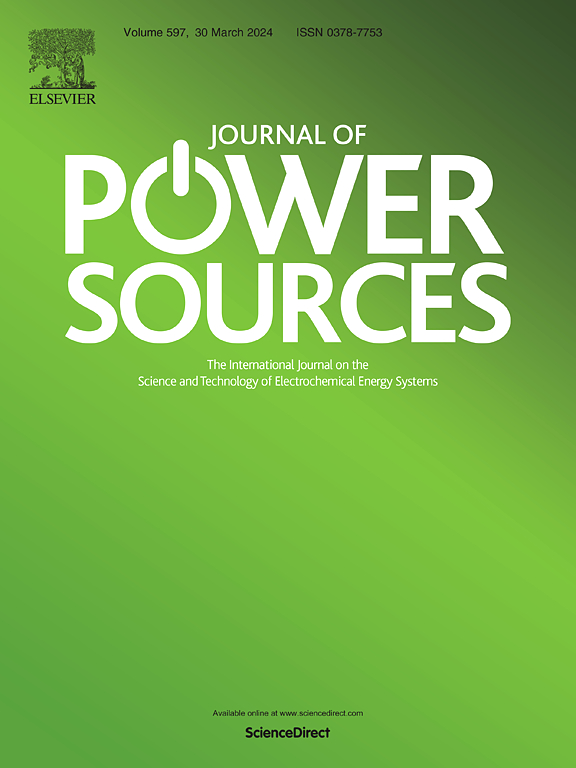Highly stable zinc anode enabled by a Zn-ion-regulating interface for Zn metal batteries
IF 8.1
2区 工程技术
Q1 CHEMISTRY, PHYSICAL
引用次数: 0
Abstract
Multifunctional interfacial construction of zinc metal anodes is a crucial measure to surmount the uncontrolled dendrite growth and intricate side reactions. Herein, an organic polymer film formed by the complexation effect between polyacrylonitrile (PAN) and zinc acetate is introduced on a zinc metal to prepare zinc complex polyacrylonitrile@Zn electrode (PANA@Zn). This PANA layer functions as a stretchy barrier to restrain the side reaction and repress zinc dendrites. More importantly, the zinc ion kinetics of PANA layer can be controlled by the complexation states between Zn species and C=N bond along with the heating time, which can regulate the zinc ion flux distribution, resulting in fast and uniform zinc deposition. Thanks to this multifunction protective layer, the obtained PANA@Zn electrode is given a stable cycling lifespan of 3000 h at 1 mA cm−2 (polarization voltage of 46 mV). Furthermore, the convincing performances are also displayed in full cells, which involves 179 mAh g−1 after 700 cycles at 1 A g−1 for CNT/MnO2||PANA@Zn full cell, indicating the feasibility of this multifunction shielded layer for the application in zinc metal anode.

高稳定的锌阳极由锌离子调节接口实现,用于锌金属电池
锌金属阳极的多功能界面构建是克服枝晶生长失控和复杂副反应的关键措施。本文将聚丙烯腈(PAN)与乙酸锌络合作用形成的有机聚合物膜引入锌金属表面,制备锌络合polyacrylonitrile@Zn电极(PANA@Zn)。PANA层具有弹性屏障的功能,可以抑制副反应,抑制锌枝晶。更重要的是,PANA层的锌离子动力学可以通过Zn与C=N键之间的络合状态随加热时间的变化来控制,从而调节锌离子通量分布,从而实现快速均匀的锌沉积。由于这种多功能保护层,获得的PANA@Zn电极在1 mA cm−2 (46 mV极化电压)下具有3000小时的稳定循环寿命。此外,在全电池中也显示了令人信服的性能,在1 A g−1下,CNT/MnO2||PANA@Zn全电池在700次循环后达到179 mAh g−1,表明该多功能屏蔽层应用于锌金属阳极的可行性。
本文章由计算机程序翻译,如有差异,请以英文原文为准。
求助全文
约1分钟内获得全文
求助全文
来源期刊

Journal of Power Sources
工程技术-电化学
CiteScore
16.40
自引率
6.50%
发文量
1249
审稿时长
36 days
期刊介绍:
The Journal of Power Sources is a publication catering to researchers and technologists interested in various aspects of the science, technology, and applications of electrochemical power sources. It covers original research and reviews on primary and secondary batteries, fuel cells, supercapacitors, and photo-electrochemical cells.
Topics considered include the research, development and applications of nanomaterials and novel componentry for these devices. Examples of applications of these electrochemical power sources include:
• Portable electronics
• Electric and Hybrid Electric Vehicles
• Uninterruptible Power Supply (UPS) systems
• Storage of renewable energy
• Satellites and deep space probes
• Boats and ships, drones and aircrafts
• Wearable energy storage systems
 求助内容:
求助内容: 应助结果提醒方式:
应助结果提醒方式:


